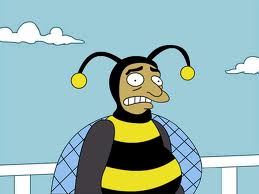Pathogens, Pests, and Socioeconomics Play a Key Role, but are Under Researched
In a paper published this week in the journal EcoHealth, scientists at EcoHealth Alliance investigated the causes of long-term declines of colony numbers and annual colony losses.
The work shows that socioeconomic and political pressures on honey production over the past few decades has caused a long-term reduction in the number of colonies in production in the USA, Europe and many other countries. However, more recently honey bee managers have reported increased losses in their stocks each year (so-called ‘annual colony losses’), and EcoHealth Alliance’s research shows that pests, pathogens and management issues likely play a major role in this, and are under researched and poorly understood drivers.
Honey bees provide ecosystem services through pollination of crops worth $215 billion annually worldwide. Concern over honey bee declines in recent decades as well as annual losses has sparked debate over their causes and has led to hypotheses that a specific novel syndrome ‘Colony Collapse Disorder’ (CCD) is plaguing bee populations. Many scientists have proposed new drivers such as pollution from pesticides as the cause of these declines. EcoHealth Alliance conducted an in-depth, critical review of the science behind these declines and losses and have shown that: 1. The long-term multi-decadal downward trend in the number of bee colonies in many countries reflects a reduction in the profitability of bee keeping due to economic and/or political change, with many bee keepers leaving the profession; 2. Data on annual losses is sparse and collected in a non-uniform way that makes comparing the extent and potential cause of losses to those in previous years difficult 3. That there are significant inconsistencies with the way researchers (and thus potentially bee keepers) define CCD, suggesting that it may be over-reported; and 4) that the major causes of annual losses include pests (e.g. the Varroa mite), pathogens (e.g. viruses that these mites carry), and the need for research and advancements in management techniques available for large-scale apiaries which have evolved from smaller “back-yard” productions. “There is a growing understanding of the role that introduced pests and pathogens play in species declines,” said Dr. Peter Daszak, Disease Ecologist and President of EcoHealth Alliance. “We call this phenomenon ‘Pathogen Pollution’, and bees are no exception – the role of introduced mites and the pathogens they carry is under researched and desperately in need of more work,” he added.
In Europe and the U.S., long-term declines have been documented, yet the overall number of colonies globally has increased 45 percent since 1961. This in conjunction with the 300 percent rise in pollinator-dependent crops requires the industry to manage honey bees like never before; millions of honey bees are moved across the country annually to pollinate crops.
One factor that is vital to understanding the metrics of long-term colony declines lies in the methodology of counting colonies. In the 1980s, the USDA National Agricultural Statistics Service (NASS) reduced the number of colonies in the U.S. by one million by changing the formulation of how colonies were counted previously; the NASS negated to count colonies in operation that had five or fewer hives. This change, in addition to socioeconomic and political factors, contributed to the decline of colony numbers over previous decades.
“Because of the nature of colony losses, it is very difficult to collect key information on the cause unless standardized, in-depth data collection is occurring well before the loss takes place. Bee management specialists and veterinarians need to support bee keepers with information, tools, and resources to adapt to a swiftly growing production system,” said Dr. Kristine Smith, Wildlife Veterinarian and Associate Director of Health and Policy at EcoHealth Alliance. Dr. Smith continued, “confusion also exists around the term Colony Collapse Disorder since the media and general public often generalize by applying this term to any larger than normal annual losses.” The full examination of losses should include an array of factors including but not limited to:
- Prevalence of pathogens and pests in the colony over the previous year
- Environmental and ecological disturbances
- Pesticide application and misuse in surrounding areas
- Management and industry practices such as migration, nutrition, and medical treatments
The issues surrounding honey bee colony declines and honey bee losses requires extensive standardized data collection, increased surveillance and surveys of management practices and further research. As further research still needs to be conducted two important aspects remain open for more exploration; the toll of agricultural intensification on this semi-free ranging managed species and the confounding pressure of viruses spread through Varroa mites and the burden of these viruses and mites at the individual bee and colony level.



I have found that using Greenbug for Outdoors for pests has two wonderful side effects for honey bees. 1). – It kills and repels pests I do not want while causing no harm to the bees (they are sight-driven and Greenbug only affects smell or pheromone-driven pests) and 2). – Greenbug for Outdoors DOES kill the varroa mites known to plague beehives. I have had grat success and recommend it highly. For more information, their website is http://www.greenbugallnatural.com